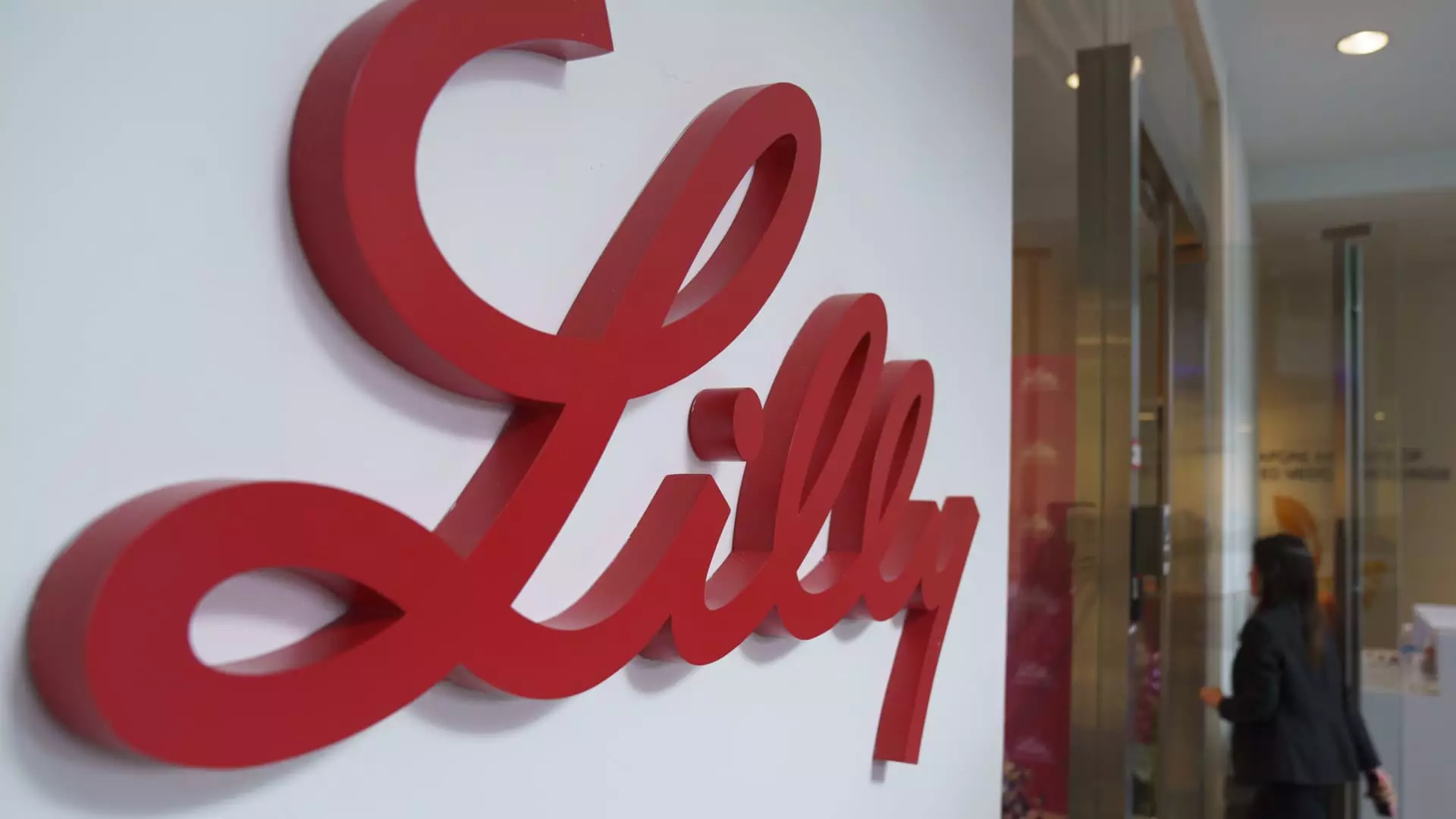Eli Lilly, a prominent player in the pharmaceutical sector, recently revised its revenue projections downward, attributing this adjustment to unmet expectations for its highly sought-after diabetes and weight loss medications. This announcement catalyzed a significant drop in the company’s stock, with shares plummeting by over 7% during midday trading. The new revenue forecast for fiscal year 2024 stands at approximately $45 billion, a reduction from the previous estimate of between $45.4 billion and $46 billion established just a few months earlier in October.
Despite the cut in expectations, the revised revenue figure still represents an impressive 32% increase compared to the previous year. Eli Lilly has actively worked to surge its manufacturing capabilities in light of the rising demand for its incretin drugs, particularly Mounjaro and Zepbound. These medications have become essential in the growing landscape of diabetes treatment and obesity management. The Food and Drug Administration (FDA) has acknowledged this demand by declaring the U.S. shortage of tirzepatide—the key active ingredient in these medications—over as of December. This development highlights the company’s commitment to meeting consumer needs while also addressing regulatory challenges.
Future Prospects and Production Expansion
In a recent interview, CEO Dave Ricks expressed optimism regarding the company’s ability to meet burgeoning demand, stating that Eli Lilly has “tons of supply coming online.” Ricks indicated plans to enhance manufacturing capacity further, projecting that the firm could produce at least 60% more sellable doses of its incretin products in the first half of 2024 compared to the previous year. This ambitious strategy illustrates the company’s willingness to adapt quickly to market demands and positions Eli Lilly favorably among its competitors, including industry giant Novo Nordisk.
For the fourth quarter, Eli Lilly is now forecasting $13.5 billion in revenue, which encompasses around $3.5 billion from Mounjaro and $1.9 billion from Zepbound. Analysts had anticipated higher figures, with expectations set at $13.94 billion for the quarter and $45.49 billion for the year overall. This dissonance between projected and actual revenue highlights the challenges Eli Lilly faces as it navigates an increasingly competitive landscape in pharmaceuticals.
Furthermore, the company is venturing into the development of an oral obesity treatment, aiming for greater convenience for patients. Ricks expects this innovative solution to receive approval as soon as early 2025, which could serve to bolster both Eli Lilly’s market position and overall revenue potential in the obesity treatment spectrum.
The challenges posed by fluctuating demand and competitive pressures in the pharmaceutical market necessitate a cautious approach for Eli Lilly. While the company has made significant strides in production and innovation, the recent downward revision of revenue expectations serves as a reminder of the complexities involved in the industry. As Eli Lilly continues to expand its manufacturing capabilities and develop new products, its ability to adapt to market conditions will be key in determining its future success. The upcoming fiscal years will test the company’s resilience and strategic planning in a rapidly evolving marketplace.

